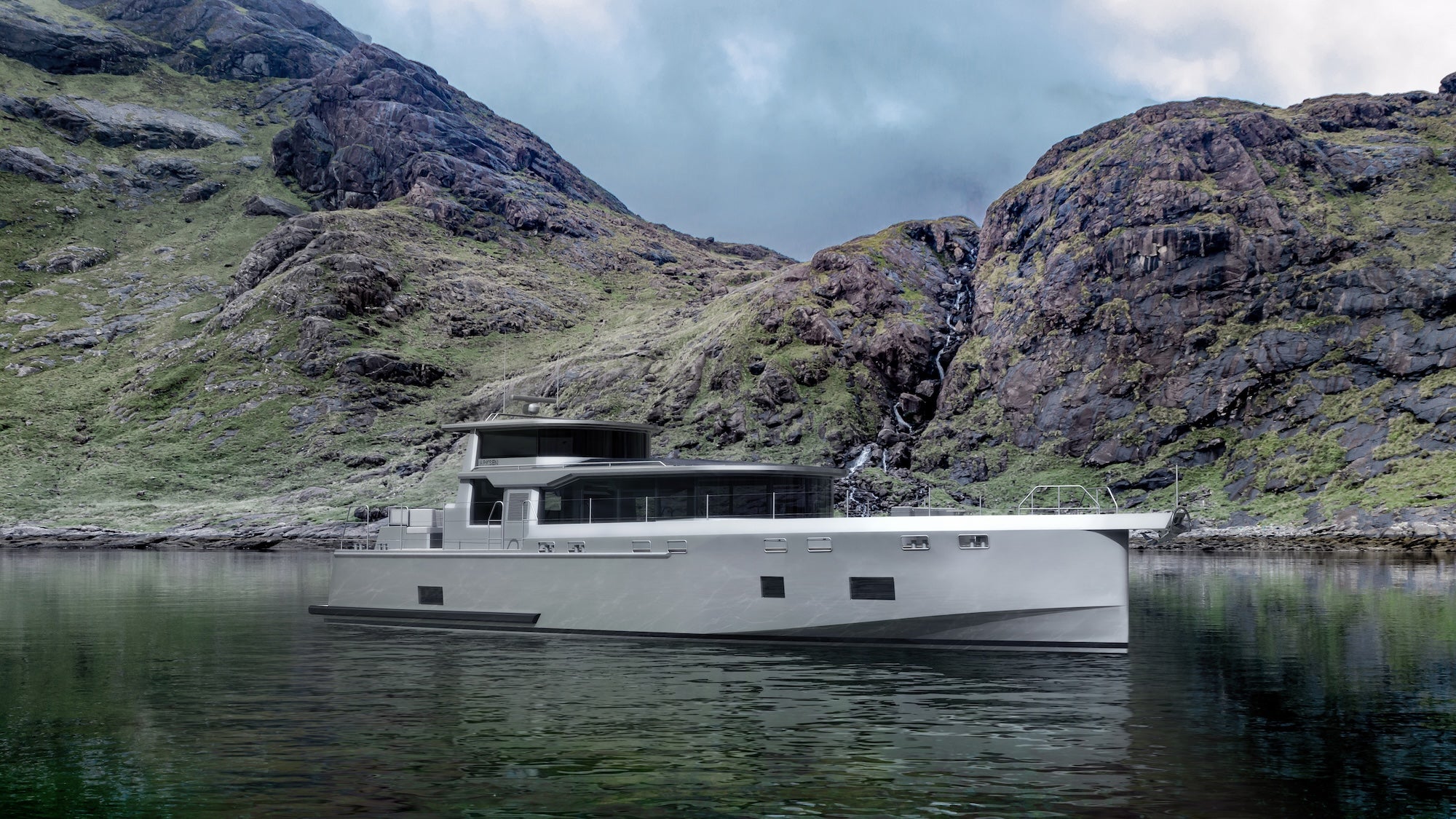Why the Arksen 65 Explorer Yacht is ideal for owner-operators
The Arksen 65 Explorer Yacht has been designed from the ground up with the capability of being run as an owner-operator vessel, employing intelligent engineering to blend the functionality of a smaller boat with the same exceptional interior space, handling capabilities and reliability found on the larger vessels in the Explorer Yacht range.
Taking the core concepts of the flagship Arksen 85 as its initial starting point, the main driver for the Arksen 65 was to create a vessel that is focused on functionality in every area, maximising onboard space and enabling every part of the vessel’s operation to be able to be carried out easily and safely by a maximum of two people.
“The Arksen 65 has learned a huge amount from the 85, but it's also very unique,” says Jim Mair, Chief Technical Officer of Arksen Marine. “It’s not a copy, paste and scale approach, it is a new model with similar traits to its sister vessel, but follows a distinctly different use-case path.”
Coming in at a total length of 21.3m (69 feet and 11 inches), with a beam of 5.3m (17 feet and five inches), the vessel’s sleek, narrow lines and low air draft belie an extremely spacious interior, while under the skin, clever engineering has been used to create the high standard of performance that is rare to find in this size of boat.
“There is a well-trodden and economical path when it comes to the build standards of yachts around this size,” explains Mair. “The Arksen 65 meets the rule requirements, but goes further in terms of the level of robustness and redundancy you might expect to see on a larger yacht. We’ve done this in a way that is still easy to maintain for an owner-operator.
“Every design aspect was driven by the question ‘can a single person operate this particular item?’ In almost every case, we have engineered the boat to achieve that. There are a few aspects where someone would ideally be at the helm while someone else has to do a particular job, but for some, it would be possible to operate the boat single handed.”

Innovative tender launching for ease of operation
The design team’s wealth of personal experience on the water steered an understanding of which areas would be most important when it comes to hands-on operation. As a result, a major focus was placed on simplifying a number of key aspects of life onboard, in particular the design of the lazarette storage area and the handling of the tender and outboard motor.
“Tender launching is always quite an important consideration when you’re shorthanded,” says Mair. “On this vessel, the tender is stowed on sliding chocks on the bathing platform for coastal cruising. The chocks can slide so half the tender hangs out over the water, freeing up the main deck up for lots of seating and giving great access to the big lazarette door.
“When you come to launch the tender, it’s already half way there, so one person can hook the lifting line onto the davit and drop the tender into the water. Those chocks can also be completely removed, to further maximise space on deck, and for long-distance cruising, the tender can be directly secured to the rear bulkhead for more secure stowage.”
Putting the tender’s outboard away for longer-term stowage, or taking it back out and re-rigging it for use, is also a one-person job, thanks to an innovative stowage bracket. This sits inside the lazarette, securely stowed for sea, but it is hinged so it can be unlocked and swung into the lazarette doorway, putting it within easy access of the lifting davit.
Mair continues: “In one move, you can swing the outboard into the doorway, lock it in place, hook on the lifting line, lift it off its bracket using the davit and lower it onto the tender. The same can be done in reverse to stow it away. It is an extremely efficient process for an owner operator, but also means fewer people are needed if you want to run it as a crewed vessel.”

Maximising the space onboard an Explorer Yacht
The use of a slender low-volume hull to optimise efficiency contrasts to other designs on the market, which opt for higher volumes to maximise onboard space and luxury but at the expense of efficiency and seakeeping. Delivering the best of both worlds added complexity to the design – so the Arksen engineers had to be very innovative with spatial engineering.
“We had to maximise the usable interior volume in a slender hull, so we had to be clever with the routing of onboard systems and the design of the structure” says Mair. “We’ve pushed that interior envelope as far as possible, to maximise comfort and user experience, whilst still maintaining ease of access and maintenance for all the systems.”
One example of this is the central location of the ship’s engine room, and Mair continues: “This splits the accommodation areas and maximises privacy, and we’ve paid a lot of attention to sound insulation and damping, to minimise sound levels in the accommodation. This is of particular importance when cruising overnight.”
“The engine room is heavily insulated for fire protection, which brings inherent acoustic insulation properties, and the accommodation side of each bulkhead is also acoustically insulated to eliminate as much structural-borne vibration noise as possible. In the same way, the accommodation spaces are insulated to reduce deck noise and hull or tank noise.”
This level of attention to detail is seen across the vessel, with innovation in every area to maximise the ease and comfort of life onboard. As a result, the Arksen 65 sits comfortably within the Explorer Yacht range as an ideal platform for short or long-distance adventures, with minimal support and maximum autonomy.
